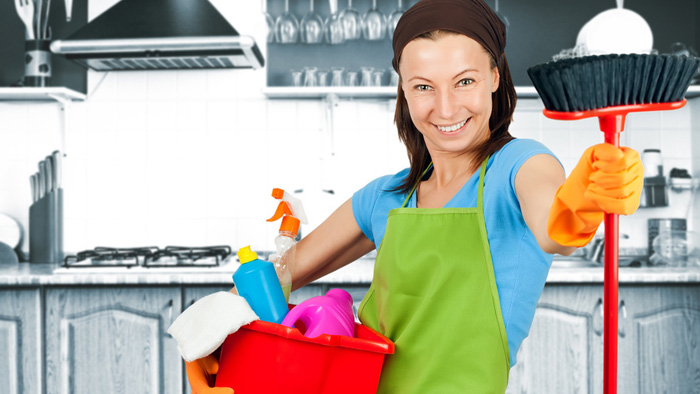31 May How to Clean Green in Your Toronto Condo
Toronto’s become more and more environmentally conscious—and when you’re twenty floors up, and it’s that much harder to vent chemical fumes out the windows, a commitment to green and non-toxic living can become that much more personal.
While you’re lowering your carbon footprint, raising your walk score, and otherwise living a sustainable lifestyle, drop these green cleaning tips into your routine: They’ll make sure Chore Day is easy on your sinuses as well as the finishes and materials in your rental condo.
Embrace the household products of our ancestors
Vinegar is magic. Your grandparents had a big bottle of it under the sink for a reason. It’s acid enough to kill germs dead, and gentle enough to not wreck the place while you’re at it. You can use plain distilled white vinegar—the cheap kind you find in your neighbourhood grocery store—for everything from cleaning windows to unclogging the showerhead to getting rid of that bathtub film. It’s good to check first how much—or if—you need to dilute your solution, and getting your measurements right might take a try or two, but a surprising amount of household cleaning tasks can get done chemical-free with a little patience and a two-litre jug of white vinegar.
Likewise, when it comes to those tougher jobs, baking soda is your new best friend. A mix of baking soda, vinegar, liquid soap and water will beat the pants off of most commercial bathroom cleaners when it comes time for scrubbing the shower walls, and baking soda in your drain, rinsed through with hot water, can stop clogs before they start. It’s also great in a paste to remove grease stains from fabric, instead of chemical spot cleaner.
If you need an all-out scour? Head to the grocery store, put down a couple bucks, and bring home a large cardboard box of Kosher salt. The crystals are big enough—and abrasive enough—to get dirt right off of tricky, hard-to-clean spots like your bathtub drain, and dissolve absolutely harmlessly into the rinse water when you don’t need them anymore.
There are buckets (literally) of ways to use basic household items to clean without too much fuss—and without smelling chemicals in your bedroom all night. The David Suzuki Foundation is, unsurprisingly, a fabulous resource for green cleaner recipes.
Get a source
If you’re more of a buy person than a brew person, there are lots of Toronto businesses ready to supply you with tough-but-gentle green cleaning products. Brick-and-mortar storefronts like Grassroots or The Big Carrot have racks of cleaning products and will refill bulk containers, and online, local startup Greater Goods pre-vets all its products for greenwashing, toxic ingredients, or other unpleasantness, and will deliver your order by bike anywhere in the downtown core.
If you’re buying from a more standard retailer, make sure you check the ingredients lists for any chemical ingredients—or look up that brand with the word “greenwashing”—before you buy. Unfortunately, green cleaning products is a growing market, and growing markets mean not everything that’s labeled as environmentally friendly actually checks out.
Reuse, reuse, reuse
One of the excellent benefits of that ensuite washer and dryer is that it lets you ditch the J-cloths, paper towels, and disposable sponges—and do easy cleaning with another mainstay of chore days past, the reusable rag.
All it takes is finding a tee-shirt that’s outlived its usefulness, and once you’ve given it last rites, cutting it into comfortably sized squares. The cotton in most tee-shirts are soft enough to wipe down delicate materials without scratching them, and the fabric is made to get dirty, be washed, and keep on trucking. Tee-shirt rags are free, reusable, absorbent, easy to clean, and drop your Chore Day trash bag to almost nothing.
When it comes to sponges, it’s not hard to find a reusable, non-synthetic sponge that’ll save you waste on both the manufacturing and the usage end. Brands like Twist offer plant-based sponges that’re not just chemical-free, but clean so much more easily than your average scrubber: a little hot water and vinegar and they’re back in action.
When it comes to hardwood or linoleum floors, trade in that Swiffer’s disposable sheets for a microfiber mop or dusting pad. They’re just as easy to use as the disposable dry mop refills, work dry or wet, and are will stand up to hundreds of machine washes.
Swapping in just these few small changes—one every week or two, to ease yourself in—is a great way to save your wallet and your nose when it comes to cleaning house. And it’s an even better way to keep the chemicals off your surfaces—and make sure they last longer.



No Comments